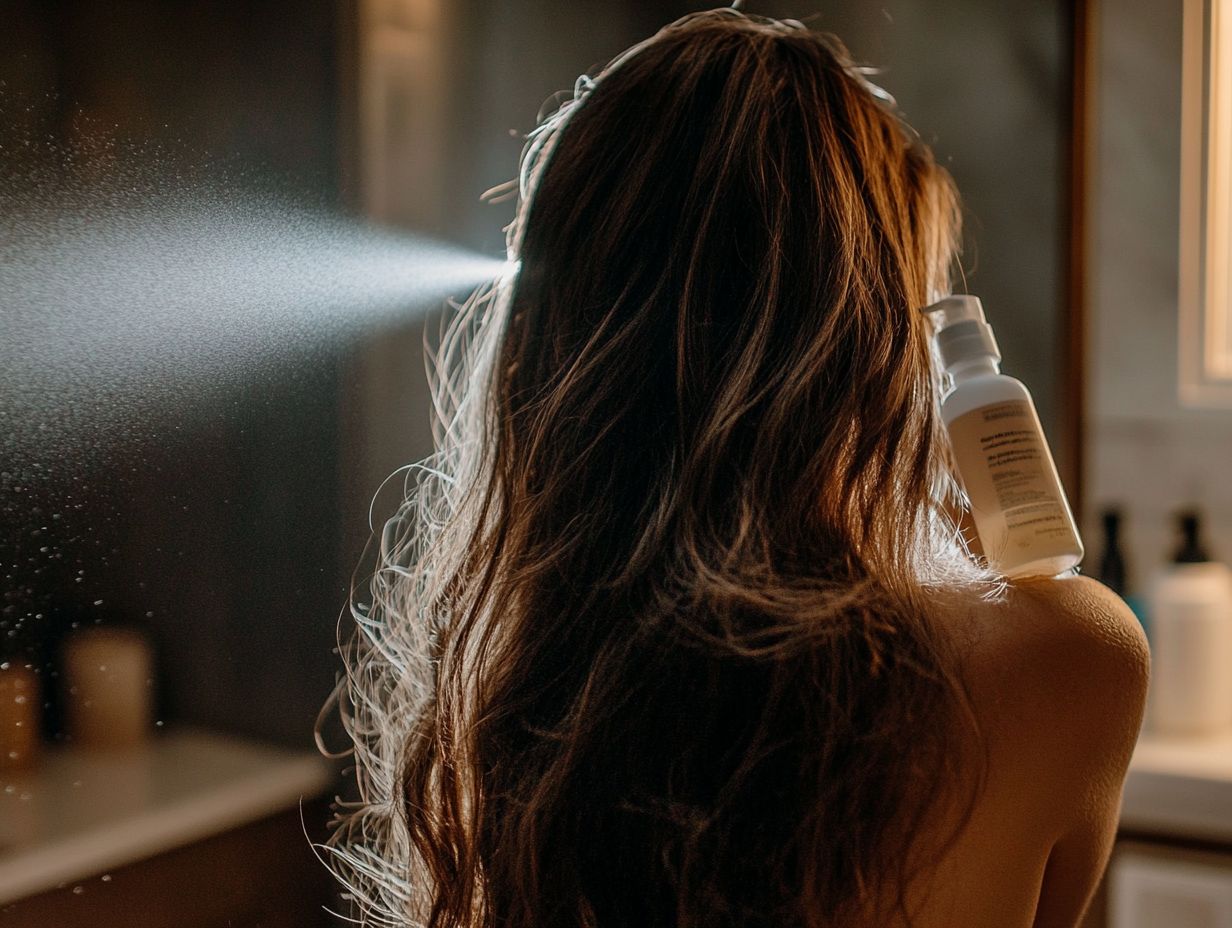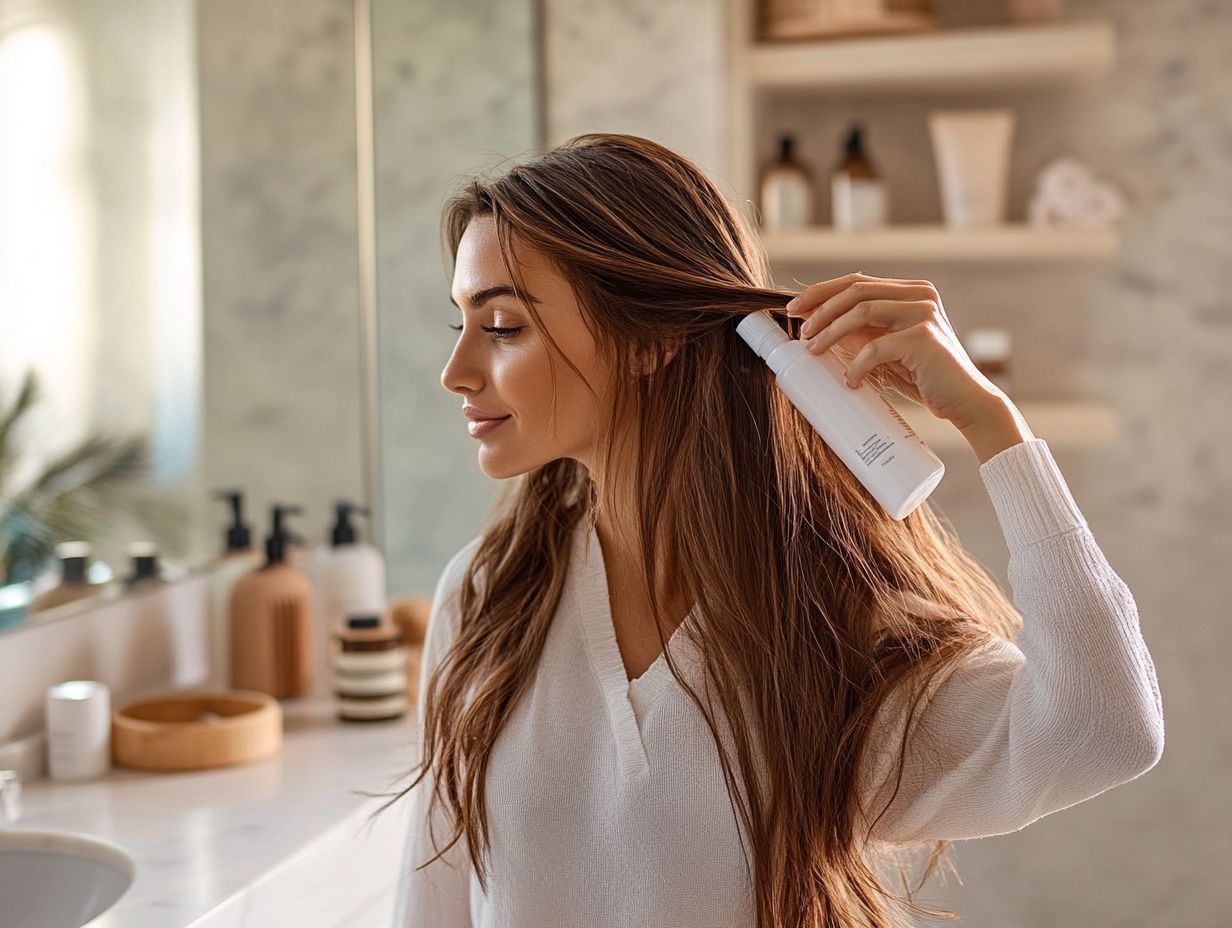Heat styling can work wonders for your hair, giving you that flawless look we all desire. However, it often comes at a cost—heat damage.
Understanding the causes and effects of this damage is crucial for maintaining healthy hair.
Explore how to identify signs of heat damage, prevent it with effective tips, and find the right treatments to repair your locks.
Additionally, discover alternative styling methods that are gentler on your hair. Read on to keep your hair looking its best!
Table of Contents
Key Takeaways:

- Understanding the causes and effects of heat damage can help prevent it from happening.
- Signs of heat damage, such as dryness and split ends, should be addressed promptly to minimize further damage.
- Preventing heat damage can be done through simple tips like using heat protectant products and avoiding excessive heat exposure.
Understanding Heat Damage to Hair
Understanding heat damage to hair is essential, particularly for individuals adhering to the curly girl method. Heat damage can significantly disrupt the curl pattern, resulting in moisture loss, breakage, and split ends.
Various factors, including frequent use of heat styling tools, elevated heat settings, and insufficient protective measures, contribute to this problem, ultimately jeopardizing hair health. Professional stylists typically advocate for a comprehensive maintenance routine that incorporates deep conditioning and the application of heat protectants to minimize damage.
With the appropriate knowledge and practices, individuals can preserve the integrity of their curls throughout their hair journey.
Causes and Effects of Heat Damage

Heat damage occurs when hair is subjected to excessive temperatures without sufficient protection, resulting in thermal injury and various adverse effects on hair health.
This situation often arises when individuals frequently utilize heat styling tools such as blow dryers and curling irons, which can attain dangerously high temperatures. The risks associated with this intense heat exposure may present as dryness, brittleness, and even breakage, underscoring the importance for individuals who regularly style their hair to implement protective measures.
Incorporating heat protectants into one’s routine and selecting moisturizing esters are critical steps to mitigate these risks. These products serve as a barrier, facilitating styling without compromising the hair’s integrity, thereby ensuring it remains lustrous and resilient against the damaging effects of heat.
Signs of Heat Damage
Identifying signs of heat damage is crucial for maintaining healthy hair and ensuring effective treatment.
Common indicators of heat damage include:
- split ends
- moisture loss
- difficulty in detangling hair properly
Identifying and Addressing Damage

Identifying and addressing hair damage necessitates a discerning eye and a comprehensive understanding of hair health. Consulting a professional stylist can facilitate the recognition of the issue’s severity and determine the most effective course of action.
Self-assessment techniques can also prove invaluable. For example, gently tugging at strands to evaluate elasticity or examining for split ends can provide significant insights into hair condition.
When seeking practical solutions, incorporating nourishing ingredients such as argan oil or keratin-rich hair serums can greatly assist in repairing heat-damaged hair. These products not only deliver essential hydration but also enhance the strength of strands against future damage.
By combining self-assessment strategies with professional guidance, individuals can effectively enable themselves to restore their hair to its optimal condition.
Preventing Heat Damage
Preventing heat damage is essential for individuals who frequently style their hair. Implementing protective measures, selecting a lower heat setting, and considering air-drying as an alternative can greatly improve overall hair health.
Tips for Protecting Hair from Heat

Protecting hair from heat involves a comprehensive strategy that encompasses the use of heat protectants, the selection of professional-grade heat styling tools, and the incorporation of hydrating treatments into one’s hair care routine.
To effectively maintain hair health, it is essential to begin by applying a high-quality heat protectant prior to any styling. This practice establishes a protective barrier against damage caused by elevated temperatures.
Selecting professional-grade styling tools promotes more even heat distribution, significantly mitigating the risk of hot spots that can lead to hair breakage.
Moreover, integrating hydrating treatments, such as deep conditioners or leave-in serums, helps replenish moisture levels, thereby ensuring that hair remains resilient and vibrant.
Additionally, transitioning to silk pillowcases not only enhances the sleeping experience but also reduces friction, further safeguarding delicate strands during rest.
Treatment and Repair for Heat Damaged Hair
Addressing and repairing heat-damaged hair necessitates a strategic approach that incorporates the use of deep conditioners, hair masks, and other nourishing ingredients.
Additionally, regular salon visits for professional care and guidance are essential for optimal results.
Effective Products and Techniques
Utilizing effective products and techniques is essential for restoring heat-damaged hair. Deep conditioners, hair oils enriched with vegan collagen, and other targeted treatments can significantly enhance overall hair health.
Along with these vital products, incorporating a weekly hair mask can provide an important boost of hydration, further supporting recovery. For individuals dealing with severely compromised strands, leave-in conditioners infused with natural oils such as argan or jojoba can be particularly effective, as they seal in moisture and create a protective barrier.
Implementing a heat protectant spray prior to styling can prevent future damage, ensuring the hair remains resilient and vibrant. By adopting a comprehensive care routine that emphasizes nourishment and protection, individuals can observe remarkable improvements in their hair’s texture and strength.
Alternatives to Heat Styling
Identifying alternatives to heat styling is crucial for preserving the health of hair. Techniques such as air-drying and gentle styling methods can significantly reduce the risk of damage while still facilitating the creation of aesthetically pleasing and relaxed hairstyles.
Gentler Styling Options
Gentler styling options are increasingly favored by individuals seeking to maintain their curly girl aesthetic. Curl-boosting sprays and other protective techniques can help achieve desired styles without the risks associated with heat styling.
These methods not only preserve the vibrancy and definition of curls, but they also play a critical role in minimizing damage, which is essential for those aiming to nurture their natural texture. For example, utilizing leave-in conditioners and hair oils can provide deep hydration to the strands, thereby enhancing elasticity and shine. Additionally, styling with products specifically formulated for one’s curl type can promote healthy hair growth and mitigate frizz, resulting in a polished and enduring appearance.
By embracing these gentler solutions, individuals can maintain the beauty of their luscious curls while ensuring that their hair remains in optimal health.


